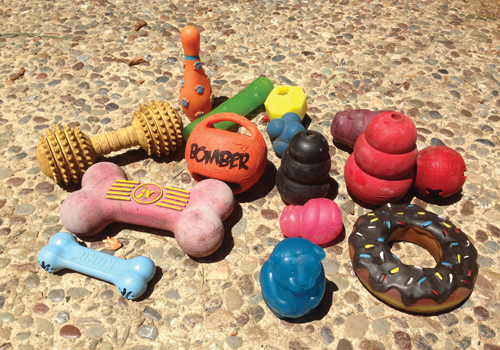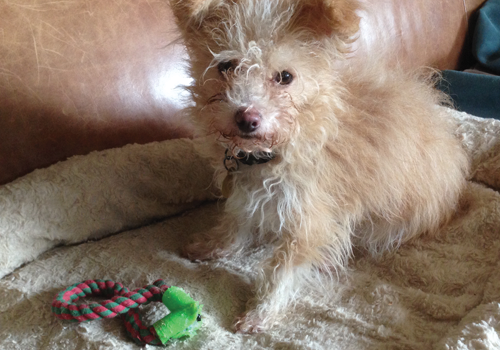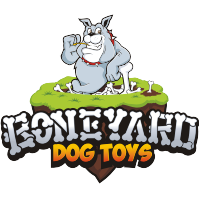Synthetic and rubber dog toys designed for chewing
Just as there is a large selection of hard and soft natural chew toys available, your dog can also pick from a rapidly growing and ever changing variety of synthetic and rubber toys.
Keep in mind, there are pros and cons to synthetic and rubber toys. Because these types of toys are manufactured, its important to pay attention to what they are made of and where they are made.
Not every country has the same standards for product manufacturing.
This video discusses types of well known as well as lesser known hard synthetic and rubber chew toys
Plastics or synthetic materials have been molded to look and chew like hard bone. Many of these are textured or flavored. Similarly, the rubber chew toys also come in every imaginable shape with internal and external cavities suitable for hiding treats.
The treat stuffed toy has become very popular because it can be used in a variety of training situations such as crate training and staying in place for a period of time.
Synthetic and rubber chew toys can add variety to your dog's toy basket but are they safe?
A common belief about these types of chew toys is they are totally safe. The thinking is these toys are not prone to splinter or break when chewed like some of the edible natural chew toys like bones and antlers. While it is true that in general these toys are unbreakable or indestructable, some dogs will still manage to chew off small pieces which can be a problem.
The rubber based chew toys often have edges or protrusions that are easily chewed off by the more aggressive chewers. Likewise, the hard synthetic bones, if given enough time can be chewed down to a small enough size to swallow. Pieces chewed off are non-digestible and depending on the size and shape may or may not pass.
The best solution is to understand whether your dog is a gentle chewer or a more aggressive chewer. Inspect the chew toys regularly. Once a toy has been chewed down to a small enough piece to swallow, replace it with a new one. A periodic check of the toys will prevent a serious mishap.
Some of the toy manufacturers recognize that dogs of different sizes and chewing styles need different types of toys and now offer chew toys appropriate for each.
The rubber chew toys

A typical selection of rubber chew toys
First, a little about material science. In simple terms, rubbers and plastics are made by linking together chains of monomers. A process known as polymerization. The monomers used for rubber products are shorter chain molecules compared to the long chain monomers used for plastics.
Particularly in reference to plastics, the characteristics of the end product are based on the chemical composition of the side chains attached to the monomers as well as any additives that are blended in during the polymerization process such as fillers, stabilizers and plasticizers. These additives reduce production costs, impart functionality like reducing the flammability and modifing the flexibility through the addition of plasticizers.
Natural rubber or latex, is a polymer composed of isoprene and contains small amounts of plant proteins and other residues. While it is uncommon, dogs have been reported to have latex allegies and react to the rubber toys. The best approach is to be aware of the symptoms of an allergic reaction and if your dog begins exhibiting these behaviors when they play with a rubber ball or chew toy, take it away immediately and get medical attention. Remember, it may take repeated exposure to the toy before an allergic reaction occurs.
The use of synthetic rubber avoids the problem with allegies to latex because the monomers used in the process do not contain the plant proteins. Synthetic rubber can be produced from a pure form of isoprene, similar to natural rubber but lacking the proteins and other residues inherent in latex or it may be made from a blend of different petroleum-derived monomers which impart different physical and mechanical properties to the resulting rubber product.
Originally, vulcanization was the process used to produce commercial rubber. The process involved heating and treating with sulfur to produce a moldable rubber object. The properties of the end product, hardness or flexibility will depend on the additives used during the vulcanization process.
The vulcanization process is a chemical reaction between the sulfur and the isoprene polymer. The resulting rubber is not economically reusable. Therefore, these types of rubber products are considered non-recyclable.
So why the lesson in chemistry you ask? It turns out some of the chemicals used in the production of these rubber and plastic toys have questionable health and environmental effects. This is especially true with the plastics.
In recent years the pet toy industry has come under scrutiny for toxic chemicals in the toys. Unfortunately, in the United States pet toys are not regulated as are children's toys.
The concern is that pet toys strewn on the floor become fair game for kids. Not to mention the possible adverse effects chemicals might have on your dog. The problem stems from the fact that the Consumer Product Safety Commission has no jurisdiction over pet toys. This means product safety standards are left up to the individual toy manufacturers. The good news is that in the past few years many pet toy companies have made safe toys a part of their business model. In addition, some retailers have also made safety a priority. PetSmart claims to test the products it stocks.
Today there are an endless variety of rubber toys to choose from and many are made by very reputable, proactive companies. For these companies, the dog's safety and the quality of the product come first.
If safety is a priority for you, extensive lines of rubber dog toys are provided by KONG, Jolly Pets, PetSafe, Planet Dog, MajorDog, Ethical Pets, Petmate, West Paw Design, Chewber and the list grows as manufacturers realize people want safe toys for their dogs. The toys manufactured by these companies are certified or tested by independent labs to ensure they are non-toxic.
Today, dog toys are designed around types of play such as tugging, fetching, agility, puzzle activities or just chewing. The dog toys developed by different companies share certain common characteristics depending on the type of play. But how do you choose?
The KONG Classic chew toy has been around since 1976 and is thought to be the best-known dog toy in the world. They were designed to be indestructable and were perhaps one of the first rubber chew toys that was designed to be a stuffed treat toy. Today, KONG toys come in a wide range of shapes and sizes and include not only rubber toys but rope toys, stuffless plush toys and many more. For greater detail on KONG toys, check out the review of KONG toys.
The hard synthetic chew toys
Other components to be aware of and avoid are toys that contain bisphenol A (BPA) and phthalates.
BPA is one of the principle monomers used in manufacturing polycarbonate plastics and epoxy resins. The concern around BPA is that structurally it resembles estrogen and therefore it should be considered an endocrine-disrupting chemical.

Shattered plastic can be a hazard
Plastics are typically brittle. Fillers are added to alter the hardness of the material. The phthalates are used to give plastics flexibility. In the picture above, the combined rope-plastic tug toy has been chewed on by a large dog who managed to fracture the plastic part. This toy should now be removed as the remaining plastic has left sharp edges and is cracked in multiple places making it a chewing hazard.
Today it is less common to find these chemicals in the toys available now, but when shopping for hard synthetic chew toys, keep these facts in mind. Most of the hard plastic toys manufactured in the USA have addressed this problem.

Hard synthetic chew toys of all varieties (some more chewed than others)
The above phote includes an assortment of hard chew toys, mostly various types of Nylabones but also shown is a part from the PetSafe Busy Buddy Bristle Bone Dog Toy, Medium and several Hartz Chew 'n Clean
bacon flavored bones.
The Original Nylabone Chew Toy is perhaps the most popular hard synthetic chew on the market. However, they now offer a wide range of shapes and styles including flavored bones to add variety. To address safety concerns surrounding tooth fractures, these toys come in a variety of sizes and hardnesses to accommodate different ages, breeds and chewing styles. With these chew toys, its important to match the size and hardness of the bone to your dog and his chewing style. Very popular with dogs today are the flavored nylabones that look like either the venison flavored Antler Chew
or the Giant Bacon and Chicken
flavored chew bones.
For more information about the Nylabone line of synthetic chew toys, see our discussion on the Nylabone brand.
Treat stuffed chew toys
Many of the synthetic and rubber chew toys are fashioned with either substantial surface hollows or a cavity which allows for the incorporation of treats either on or within the toy. These types of chew toys have become quite popular and now serve multiple purposes.
Most of the toy companies now offer a chew toy that can be stuffed with kibble or paste or coated with a paste. Examples of these types of toys include an extensive lines by KONG and Busy Buddy toys by Petsafe.
A variety of treat stuffed toys
For toys designed with a hollow cavity, you have a choice of whether to stuff it with your dog's favorite treats, their kibble or with some tasty paste smeared inside.
With or without a treat on board, these are chew toys for your dog. When you stuff the toy with a treat, you have made the toy more interesting and in most cases prolonged the amount of time your dog will spend chewing on it.
This is important because these types of toys can become integral in training certain behaviors. Good examples include crate training, stay in place training and even in correcting destructive chewing behaviors.
video of shepherd chewing on KONG in crate.
If your dog is the type that inhales their meal, try feeding them using a treat toy filled with their kibble. Because the food is dispensed in small quantities, it forces your dog to slow down his rate of consumption.
If you are using a paste type of treat, you can change it up by freezing it in the stuffed toy. This tends to slow the process of getting the treat out and prolongs their interest in the toy.
KONG produces a ready made paste in a can that you can inject into hollow chew toys. For healthy recipes that you can make at home, check out the recipe page for stuffing ideas.
Chew toys with ready made treat refills
In the past few years, several toy companies have introduced a new concept in the treat toy. The treat toy is designed to accommodate their own special refills. The products currently popular are the KONG Marathon Bone Toy, the Busy Buddy Bristle Bone
from Petsafe and the interactive Everlasting Bento Ball
by Starmark pet products.
The Busy Buddy toys include several designs that incorporate an edible ring refill that is part of the toy. These toys include the Bouncy Bone™, Nobbly Nubbly™
, and the Jack
.
The treat refills are typically made from a combination of rice, potatoe or corn starch and flavored with chicken. The Busy Buddy also has an option for a compressed Natural Rawhiderefill that comes either flavored or unflavored.
Sign up for our FREE report.
"What Trainers Say About Using Toys During Training"
To receive a digital copy of our 15-page report, click on the eReport image above. The book covers some interesting applications of toys used by dog trainers to reinforce behaviors.
Your email address is totally secure and will only be used to send you the report.


